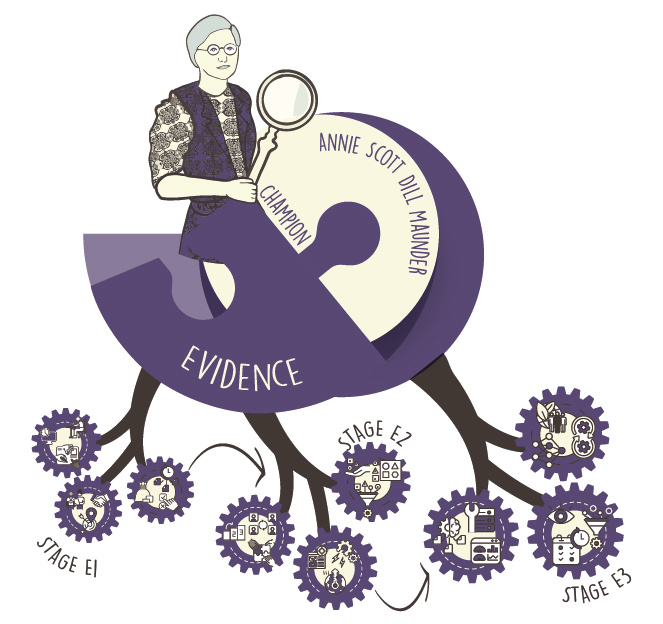

Evidence
Evidence is what you need to know in order to make better decisions when developing adaptation partnerships and assessing impacts, risks and progress towards a well adapting place. It supports evolving knowledge of what works and tests assumptions embedded in adaptation plans to inform and improve future practice and help design adaptation options. The evidence base should be co-developed and include local knowledge and lived experience as well as more formal data sources. It is vital that the evidence is translated and communicated so that it is relevant and easy to understand. Key aspects include:
- Co-Developing & Maintaining an Evidence base
The partnership should focus on co-developing an evidence base in a way that builds trust, supports transparency and includes more than the usual suspects (such as the council, land owners government and larger stakeholders) from the beginning. Local knowledge and lived experience should be valued equally alongside more formal data and evidence from peer reviewed publications and official sources. An evidence base is never “complete” it is like a living thing which some parts need to grow and others need to be maintained, as evidence needs change through time.
- Communicating & Understanding the Evidence
Evidence is only useful if it is relevant, understandable and useable. A place-based partnership will have a range of people and organisations involved and they will interact with the evidence in different ways depending on how it impacts on their own work and life, their particular areas of interest and responsibilities, mindsets and the power they have to make decisions. To bring evidence to life it needs to be translated into knowledge and shared in accessible formats which are useful to the people who need to know about it at that point in time. The partnership should share evidence clearly, openly, and consistently. Cultural and creative practice should be integral to developing and communicating evidence and involving wider society in the changes needed to adapt.
- Monitoring, evaluating and learning
It is important to be able to monitor and evaluate the impact of adaptation plans and progress of places using indicators related to discrete ‘bits’ of evidence gathered, and how it and the processes which shape and interconnect the evidence shift over temporal and spatial scales. Adaptation will require both incremental (small) and systemic changes (transformative and/or holistic changes). To support this the partnership should develop evidence and insights of interactions between climate risks and wider social, economic, and natural systems. Levers of change (Tipping points) and ‘opportunities for collaborative mapping of the system to identify windows of opportunity and levers for change. This will help to prioritise influencing activities most effectively.

